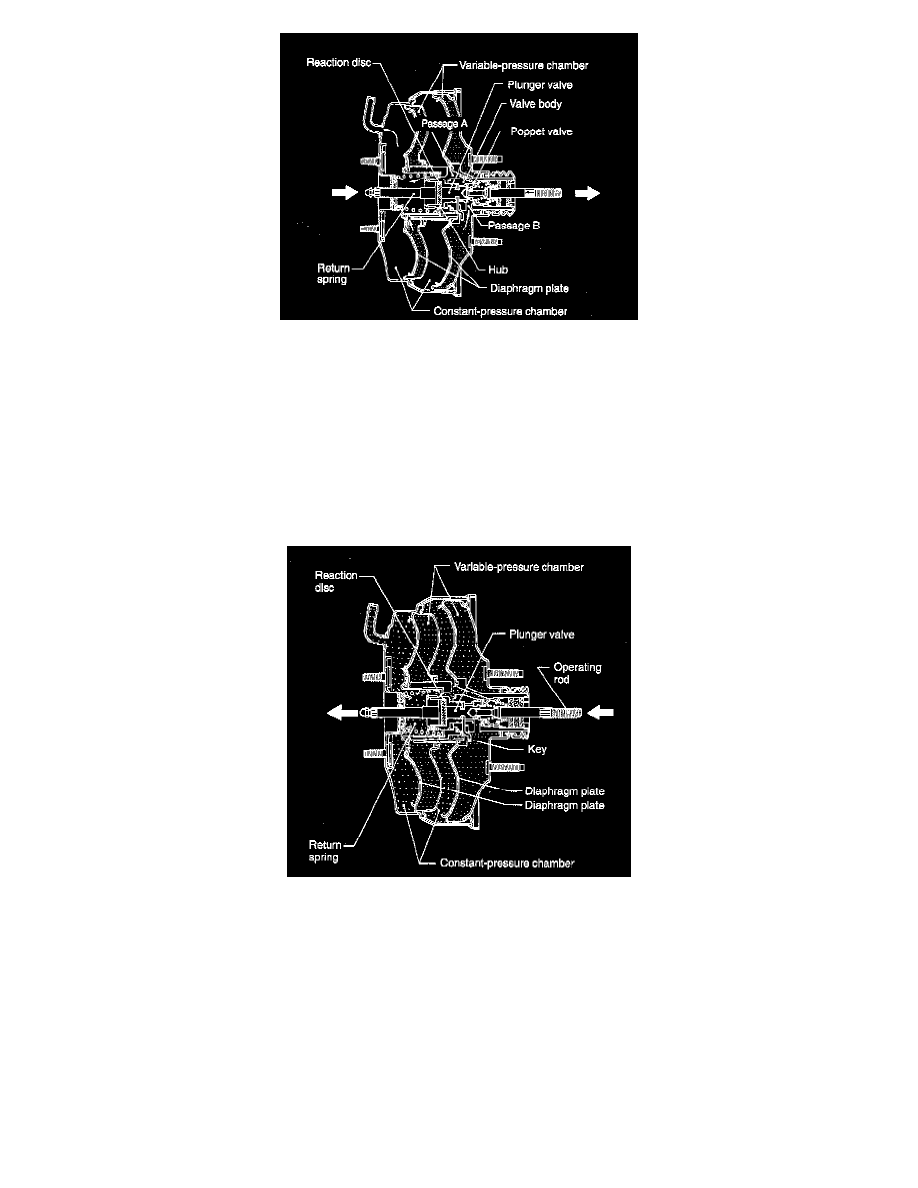Impreza L Sport Wagon F4-2.2L SOHC (1999)

When the force of brake pedal depression decreases, the forces acting on the reaction disc and plunger valve are unbalanced, so that the plunger valve is
moved to the right.
The plunger valve then comes in contact with the atmospheric valve of the poppet valve to shut off the passage between the variable-pressure chamber
and atmospheric air and, at the same time, moves the poppet valve back. Movement of the poppet valve opens the vacuum valve so that passages A and
B are linked with each other.
Air from the variable-pressure chamber is then delivered to the constant-pressure chamber. This eliminates any pressure differential between the two
chambers. As a result, the diaphragm plate is pushed back to the "release" position by the return spring.
Brake Booster With No Vacuum
When the brake pedal is depressed while the constant- and variable-pressure chambers are held at atmospheric pressure, the operating rod moves to the
left. This moves the plunger valve which in turn pushes the hub via the key.
The reaction disc (which is built into the hub) then moves the master cylinder piston via the push rod. At this point a boosting force does not occur, but
oil pressure is produced by movement of the master cylinder piston. As a result, the system serves as a hydraulic brake.
